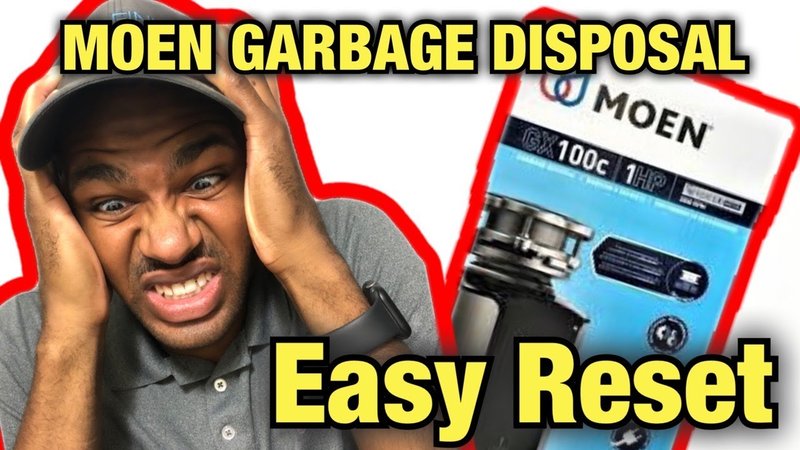
Here’s the deal. An error code E2 is the disposal’s way of saying, “Hey, something’s off.” It’s like your car’s check engine light. You wouldn’t keep driving with that light on without looking into it, right? The E2 code specifically indicates an overload condition. This happens when the disposal is trying to chew through more than it can handle — either because of a jam, a hard object, or simply overheating from tackling too much at once. Understanding what this means is crucial for getting your disposal back in top shape and avoiding potential damage.
Understanding Error Code E2: What It Means for Your Moen Disposal
When your Moen garbage disposal flashes an error code E2, it’s signaling a disruption that’s stopping it from functioning correctly. This code is essentially a safety feature, much like a circuit breaker in your house, designed to prevent further damage to the unit. The E2 code is triggered when the disposal motor senses it’s working harder than it should be — a protective measure against overheating and motor burnout.
Think of this error like trying to push through a revolving door that’s been blocked on the other side. When there’s too much resistance or something is obstructing the blades, the motor works overtime and risks getting stuck. The E2 code is there to protect the disposal and your home’s electrical circuit from harm. It’s not necessarily an indication that your disposal is broken, but rather that something needs your attention before it can safely continue operation.
So, what might cause this overload? Often, it’s a result of food waste that’s too bulky, fibrous, or simply too much of it. Potato peels, eggshells, or greasy leftovers are common culprits. These materials can create a tangled mess inside the disposal unit, much like hair clogs a shower drain. If left unchecked, this strain can lead to more serious issues, such as damaged parts or decreased lifespan of the appliance.
What To Do When Error Code E2 Appears
Discovering that your disposal is flashing an E2 code can feel daunting, but don’t worry — it’s something you can often resolve yourself. First things first: ensure your safety by turning off the disposal and unplugging it. You wouldn’t stick your hand near a running blender, right? The same caution applies here. Once it’s safe, you can begin your troubleshooting journey.
Use a flashlight to peer inside the disposal and look for any obvious blockages. This might be food caught between the grinding blades or a foreign object that shouldn’t be there (hello, lost spoon!). If you spot the issue, carefully remove it using tongs or a similar tool — not your fingers. Alternatively, the reset button on your disposal could be a quick fix. The overload protector inside the disposal acts like a resettable fuse which might just need a quick press to get things working smoothly again.
If your initial efforts don’t resolve the issue, try running cold water into the disposal and gently testing its operation again. This helps clear minor blockages and cools the motor. Remember, the E2 code is a safety feature; if it persists after these attempts, it might be time to consult Moen support or a professional. Continuing to use the disposal without addressing the root cause could lead to further damage.
Preventing Future Overloads and Keeping Your Disposal Happy
Now that you’ve tackled the issue, let’s look at keeping error code E2 away for good. Think of it as disposal maintenance — a bit like brushing your teeth to avoid cavities. Start by being mindful of what goes down the drain. Soft foods are okay, but fibrous materials like corn husks or banana peels? Not so much. These items can wrap around the blades and cause jams.
Regular cleaning is also key. Just like your dishwasher, your garbage disposal needs a little TLC. Run some ice cubes through the disposal now and then to help clean the blades, and use biodegradable cleaners to freshen up the compartment. Avoid chemical drain cleaners as they can erode parts over time. Think of these steps as a gentle massage for your disposal, keeping it in top condition.
Finally, consider timing. Don’t overload the unit with too much at once. Feed the disposal in small batches, allowing plenty of time for the blades to do their work. If you do encounter the E2 code again, don’t ignore it. Like a good friend raising a red flag, it’s there to prevent bigger issues down the road. By staying proactive and attentive, you’ll keep your Moen disposal running smoothly for years to come, ensuring a cleaner, more efficient kitchen experience.
